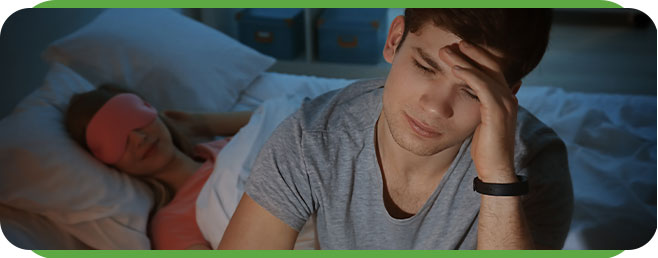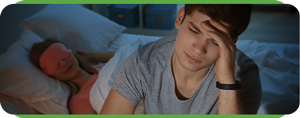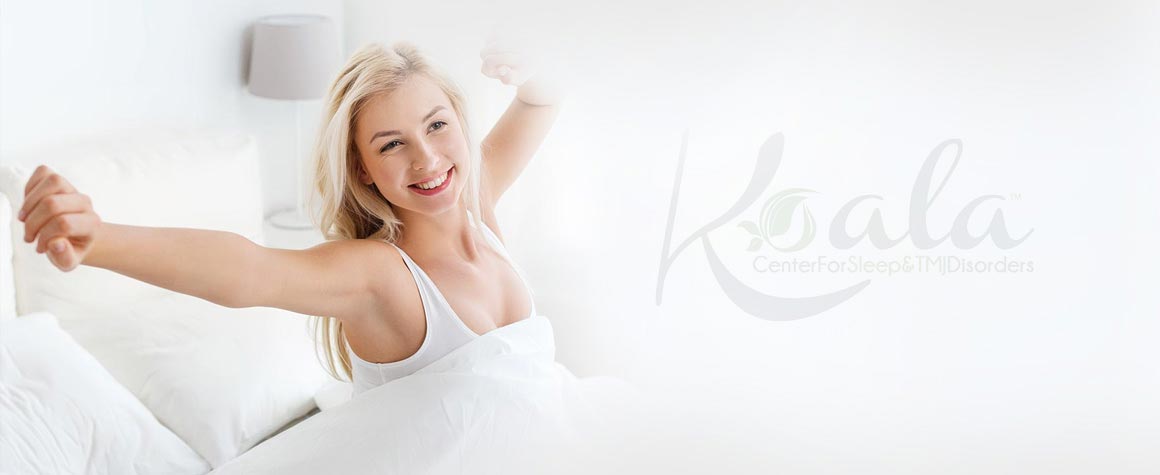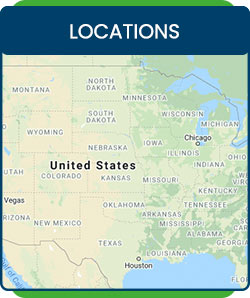What Are the Symptoms and Causes of Parasomnias an Its Treatment in Bloomington IL
To know more about parasomnia, call our team today at Koala® Center For Sleep & TMJ Disorders or visit us online to book an appointment. We have convenient locations across the U.S. in Bloomington IL, Peoria – Dunlap IL, El Paso TX, and Wausau WI.




Table of Contents:
What is a parasomnia?
What causes parasomnias?
What are the symptoms of parasomnias?
What are examples of parasomnias?
Are parasomnias a mental illness?
Sleep disorders are a common occurrence, but parasomnias can be a bit more mysterious. The word “parasomnia” comes from the Greek word “para-,” meaning “beside” and “Somnus,” meaning “sleep”. Parasomnia can be described as a disorder characterized by abnormal or unusual behavior during sleep. It can be difficult to tell if a person has parasomnia without the advice of a qualified sleep team, so it is important to visit a doctor who specializes in sleep disorders if any unusual symptoms arise.
Parasomnia is an umbrella term used to describe a group of disorders characterized by the occurrence of abnormal nervous and neurological activity during sleep. The most common types of parasomnias are sleepwalking (somnambulism), sleep talking (somniloquy), and night terrors. These disorders can be very distressing, and many people with parasomnias need professional treatment in order to help them get a good quality of sleep. It is not clear what causes each type of parasomnia, but research suggests that a combination of genetic, environmental, and other factors may play a role in the development of parasomnias.
There are several causes of parasomnias, including health issues and problems that directly affect sleep. Sleep problems that cause parasomnias include:
– The incomplete transition from wakefulness to sleep stages
– Lack of sleep
– Irregular sleep-wake schedules (shift work)
– Medications, including those that:
Cause sleep (benzodiazepines, zolpidem)
Treat depression (amitriptyline, bupropion, paroxetine, mirtazapine)
Treat psychotic disorders (quetiapine, olanzapine)
Treat high blood pressure (propranolol, metoprolol)
Treat seizures (topiramate)
Treat asthma/allergies (montelukast)
Treat infections (fluoroquinolones)
– Medical issues that disrupt sleep, such as:
Restless leg syndrome
Obstructive sleep apnea
Pain
Narcolepsy
Sleep deprivation
Circadian rhythm disorders
Periodic limb movement disorder
Health issues that cause parasomnias include:
– Fever
– Stress
– Alcohol or substance abuse
– Head injury
– Pregnancy or menstruation
– Inflammatory disease, such as encephalitis
– Psychiatric illness, including:
Depression
Anxiety
Post-traumatic stress disorder
– Neurological disease, including:
Parkinson’s disease
Lewy body dementia
Stroke
Multiple system atrophy
Multiple sclerosis
Brain tumors
Migraines
Spinocerebellar ataxia type three
The symptoms of parasomnias can vary significantly depending on the specific type of parasomnia. Some parasomnias are characterized by hallucinations, such as sleep paralysis or night terrors, whereas others present symptoms like sleepwalking or sleep talking. Parasomnia symptoms can range from mild and infrequent events to more serious and regular occurrences.
Parasomnias are categorized into three general groups: non-rapid eye movement-related parasomnias, rapid eye movement-related parasomnias, and others.
– Non-Rapid Eye Movement Parasomnias — Parasomnias that occur during non-REM stages of sleep are known as NREM-related parasomnias and include confusional arousals; sleepwalking; night terrors; and sleep-related sexual abnormal behaviors.
– Rapid Eye Movement-Related Parasomnias — When they occur during REM sleep, parasomnias are known as REM-related and include disorders such as REM sleep behavior disorder; recurrent isolated sleep paralysis; and nightmare disorder.
– Other Parasomnias — Some parasomnias do not fit into the other two categories as they take place during the transitory phase between sleep and wakefulness; they may also include some parasomnias that occur during NREM or REM sleep. These include exploding head syndrome; sleep-related hallucinations; and sleep enuresis (bedwetting).
No, parasomnias are not a mental illness. They are better described as sleep disorders, as they occur while a person is asleep. However, certain psychiatric disorders can lead to the development of parasomnias, so the two are intrinsically linked.
If you or someone you love is living with parasomnia, and has been diagnosed with obstructive sleep apnea, the team at Koala® Center For Sleep & TMJ Disorders can help provide you with more information

Additional Services You May Need
▸ KoalaKIDZzz®
▸ Sleep Apnea
▸ Snoring
▸ TMJ Disorder
▸ Fatigue
▸ Sleep Disorders
▸ Weight Loss
▸ CPAP Alternative
▸ Oral Appliances




